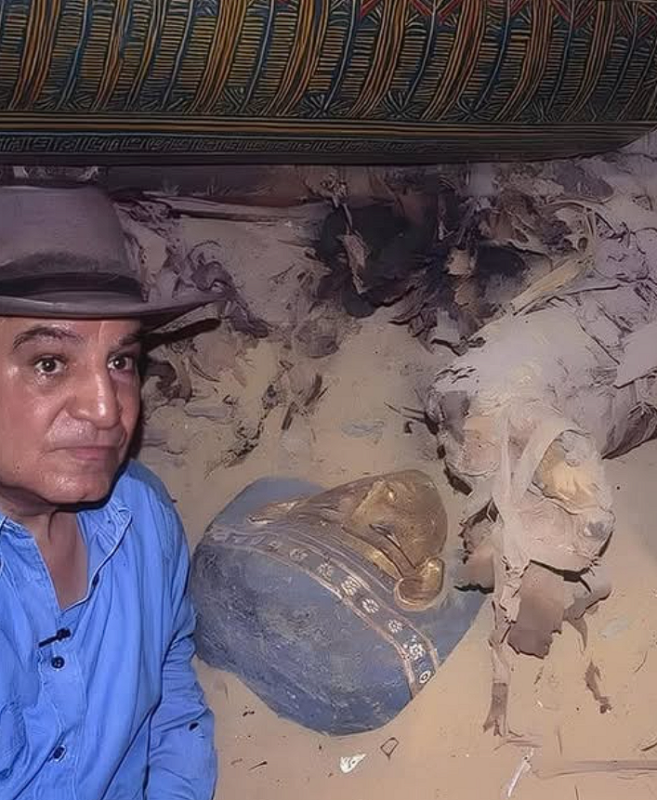Saqqara, one of Egypt’s most significant archaeological sites, has once again stunned researchers with an extraordinary discovery. Archaeologists have uncovered the tomb of Queen Neith – a previously unknown Egyptian queen whose name had never appeared in historical records. This discovery not only adds a new name to the list of Egyptian royalty but also opens a new chapter in understanding the role of women in the ancient royal court.
Queen Neith’s Tomb: A Mystery Unveiled
1. An Unprecedented Discovery
Queen Neith’s tomb was discovered in the Saqqara region, an ancient royal burial site. Until now, no historical records had mentioned Neith, making this find a groundbreaking moment in archaeology. The revelation of her name inscribed on the tomb walls left researchers astonished, as it signifies the rediscovery of a royal figure long lost to history.
2. The Complex Burial Structure and Hidden Secrets
What makes this tomb remarkable is not just the identity of Queen Neith but also the intricate architectural system surrounding her final resting place. A labyrinth of tunnels and burial chambers was uncovered, indicating that this was no ordinary tomb. Inside, archaeologists found dozens of coffins, mummies, and valuable artifacts, providing crucial insights into the royal life of ancient Egypt.

Historical Significance of the Discovery
1. Challenging Assumptions About Egyptian Royalty
This discovery raises important questions about the ancient Egyptian royal lineage, particularly the role of women in the elite class. The emergence of an unknown queen suggests that other royal figures may have been lost to history. This finding opens up new research directions on succession and the influence of women in the royal court.
2. Insights Into Ancient Burial Practices
The artifacts and mummies found in the tomb offer archaeologists a deeper understanding of Egyptian burial rituals. Based on the architectural style and the objects inside, experts believe the tomb dates back to the late Old Kingdom or the First Intermediate Period. This provides new perspectives on royal burials and cultural shifts in that era.
Impact on Archaeology
1. A Chance to Rewrite History
With this discovery, researchers have a unique opportunity to redefine the historical record of Egyptian rulers. Some experts have called it a “golden opportunity” to uncover previously unknown secrets. Analyzing the artifacts and mummies could reveal significant information about the time when Queen Neith ruled.
2. Preserving Cultural Heritage
Beyond its historical significance, this discovery also highlights the importance of preserving Egypt’s cultural heritage. The Egyptian government and international archaeological organizations are working to protect the site from degradation while making it an accessible destination for scholars and visitors worldwide.
Conclusion
The discovery of Queen Neith’s tomb at Saqqara stands as one of the most important archaeological finds in Egyptian history. Not only does it restore a lost royal figure to history, but it also reshapes our understanding of power structures and the role of women in ancient Egypt. As researchers continue their investigations, more fascinating insights are expected to emerge, further unraveling the grandeur of Egypt’s past.


CÁC TIN KHÁC
Mary Walton: The Forgotten Inventor Who Helped Clean Up America’s Cities
Tomb of Queen Nefertari in the Valley of the Queens, Egypt
Discover the Hypostyle Hall of the Temple of Hathor at Dendera
Venus de Losange: Unveiling the Mystery of a 20,000-Year-Old Paleolithic Icon